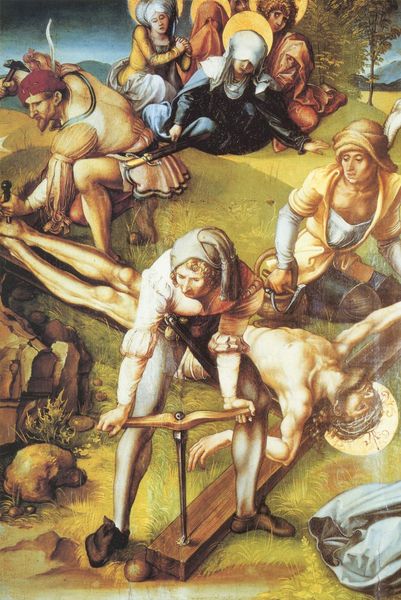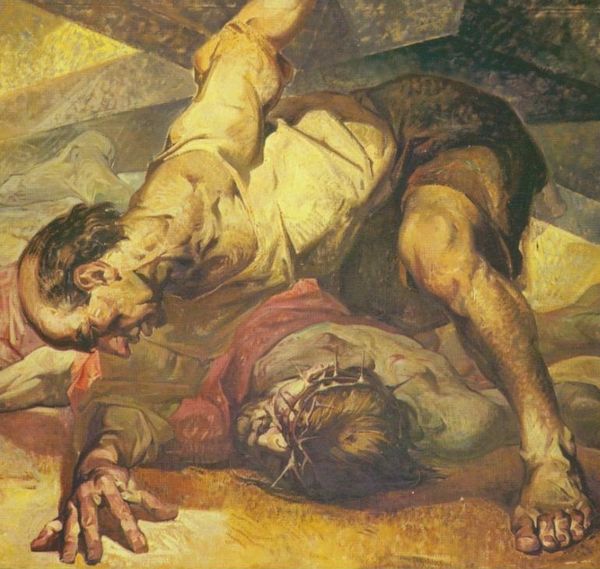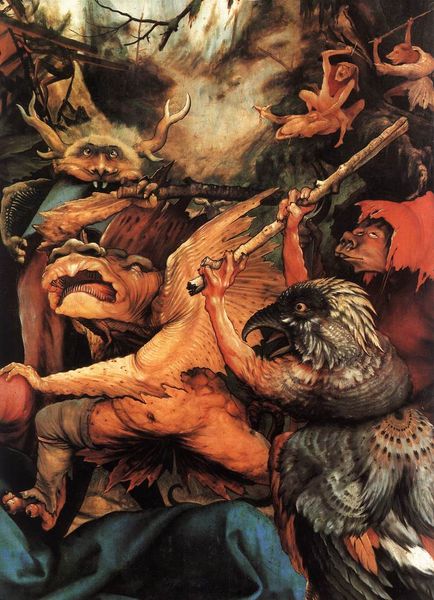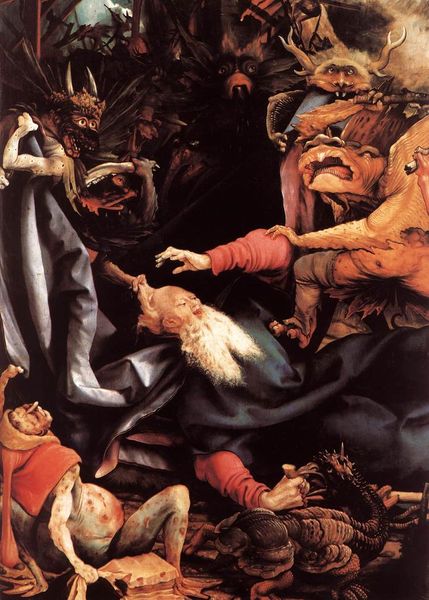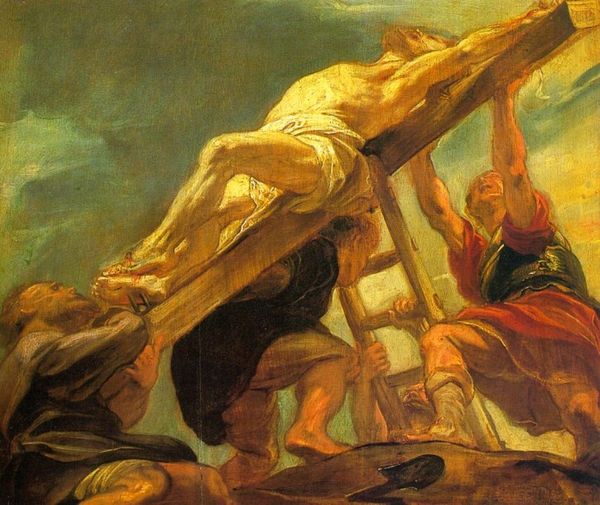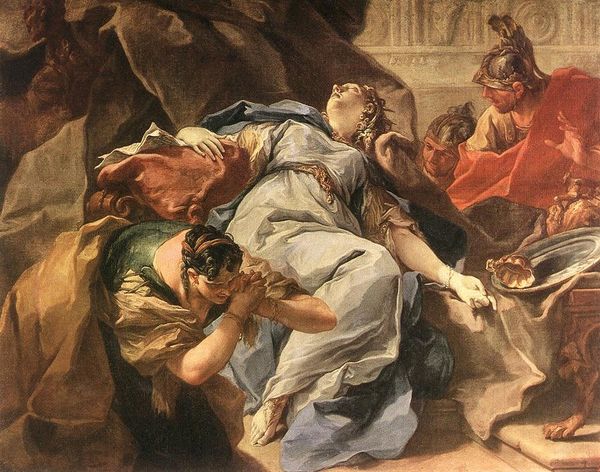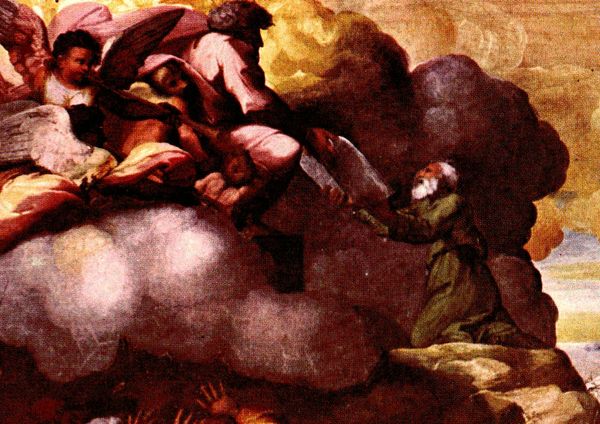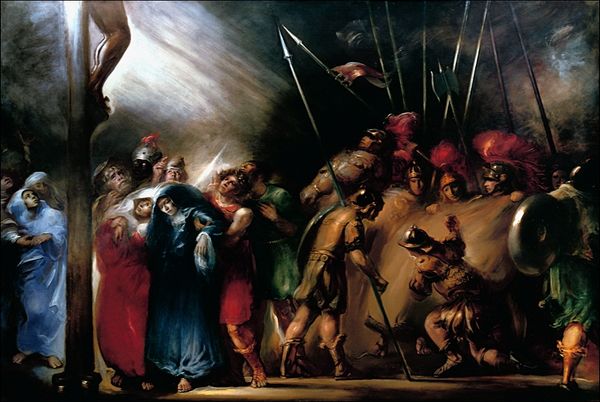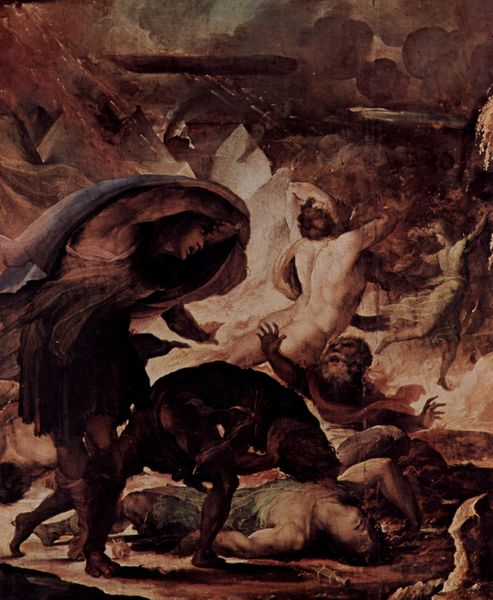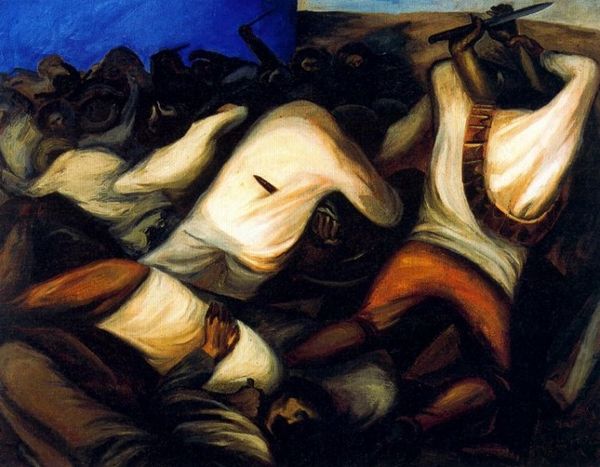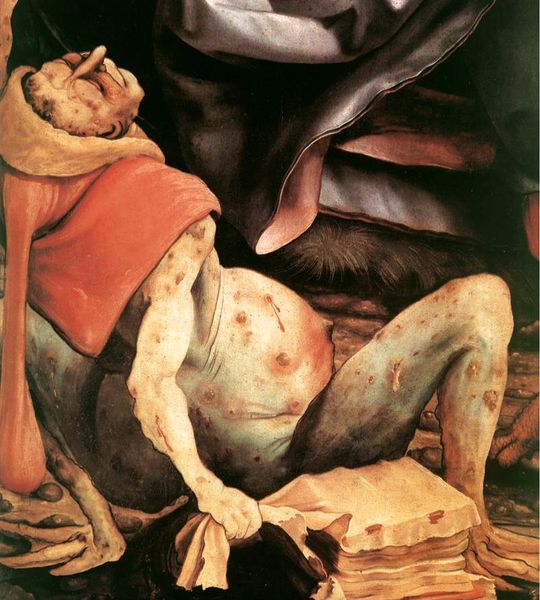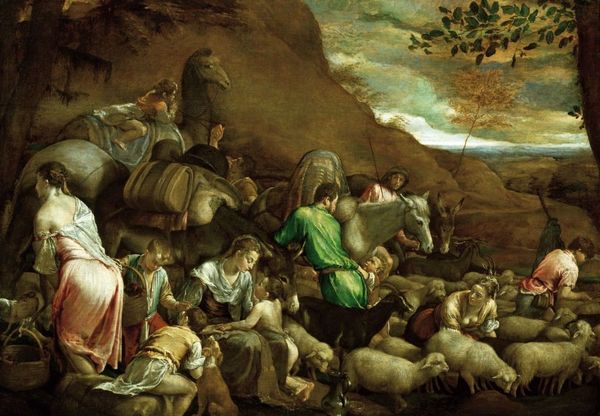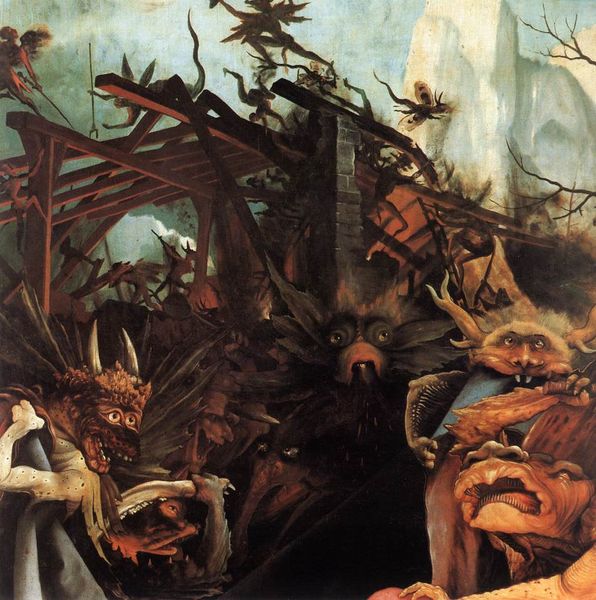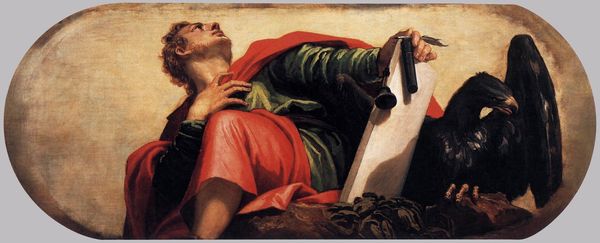
Soldiers Guarding Christ's Tomb at the Resurrection (detail from the Isenheim Altarpiece) 1516
0:00
0:00
Copyright: Public domain
This detail of the Resurrection scene from Matthias Grünewald's Isenheim Altarpiece presents a dramatic upheaval, rendered with oil paint. The soldiers, ostensibly guarding Christ's tomb, are in disarray; their forms distorted, their armour seeming to buckle under an unseen force. This chaos is structured by a contrast: the vibrant, almost ethereal rendering of the risen Christ's shroud against the solid, earthly mass of the tomb. The composition is fractured. The figures are not harmoniously arranged; rather, they appear to be violently acted upon. This formal disruption serves to destabilize the conventional narrative of the resurrection. Grünewald isn’t just illustrating a biblical event; he’s using the formal properties of painting to convey a rupture in the very order of things. Consider how Grünewald uses perspective—or rather, the lack thereof—to disorient the viewer, denying us a stable vantage point. This visual instability mirrors the theological paradox at the heart of the scene. The artist recognizes that art does not have a singular, unchanging meaning but is a site of ongoing interpretation and re-interpretation.
Comments
No comments
Be the first to comment and join the conversation on the ultimate creative platform.
